Walter Benjamin allegedly had an opportunity to leave Germany when Axis borders were still somewhat porous. Had he chosen to flee then, it’s likely he would have survived the war. To do so, however, he would have had to abandon his personal library and for that reason chose to stay behind. While I’ve wondered what books he so dearly amassed, I imagine his attachment had less to do with the books themselves and more with the notes he’d scrawled on various margins. Those thoughts he could not have recouped so easily, like breadcrumbs of thought maybe, deer trails familiar to Benjamin when found, but not so easy to re-inscribe. His marginalia was evidence of his relationship with a text. But then again marginalia terrorizes the book. It signifies a book’s mortality, demonstrating the ease with which a book can be intervened, transformed or defaced forever. I want to call attention to those moments when a given reader is compelled to trespass the authority of a text, to disobey a very basic obligation ingrained at a very early age: not to deface a book. During such transgressions, beauty can emerge in the tension between the landscape of a text itself and the trace of its reader. A book is made to be read, as a house is made to be inhabited.
Chicago artist Judith Brotman engages leaves in her series “Natural Selections.” She very delicately cuts up, splices together or highlights their unique form using stitch work. On the one hand, these interventions call attention to the delicate fragility of leaves as a medium, on the other, the grain pattern of each leaf becomes a text in its own right. Inscriptions like these activate a surface—whether the original text be a book, a house, or a piece of bone—drawing something latent inside the text out into the open of a reader’s mind.
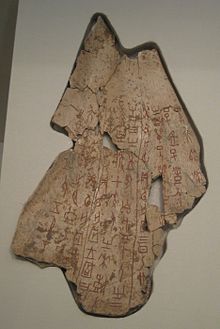
Ox scapula with a divination inscription from the Shang Dynasty, dating to the reign of King Wu Ding. (Wikipedia).
In China during the Shang dynasty, diviners used oracle bones to tell the future. Questions about the harvest, sickness, political outcomes and auspicious births were inscribed onto a bone’s surface—usually a turtle plastron (belly) or the scapula of an ox—the bone was then inserted into an intensely-hot fire. There it would crack once or twice from the heat and Diviners read answers into resulting fissures. The bone’s surface served as an interface with fortune, a metonym of the natural world. These bones have become the best record we have for Shang Dynasty events (a dynasty that scholars previously doubted existed). They also represent one of the oldest forms of text.
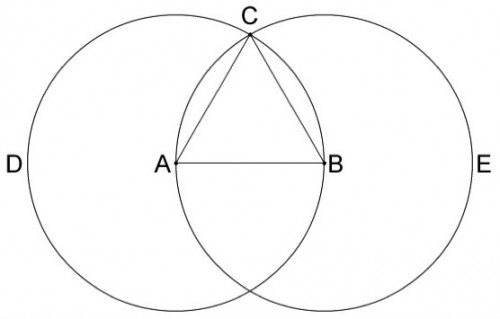
Euclid’s Elements: Book I, Proposition 1: wherein an equilateral triangle is made using the radii of two equal circles.
In a text we look for something. In cases of illuminated manuscripts, God could be found. Or in Euclid’s theorems—although a “true, perfect circle” can never be drawn or recreated, something about the mechanism of a proof can make such a circle apprehendable. Marginalia indicates moments of such text-based apprehension, marking the manifestation of something afforded by a text that is nevertheless not literally present in its architecture. It only emerges in the space between a reader and a book. As such, marginalia leaves a trace of past readers and readings alike. We desire to locate ourselves within a text, between a this and a that, or a then and there. Marginalia articulates a delicate tension between wanting to preserve the book-as-object and denying its preservation: to break its spine. To engage a text and find something therein.
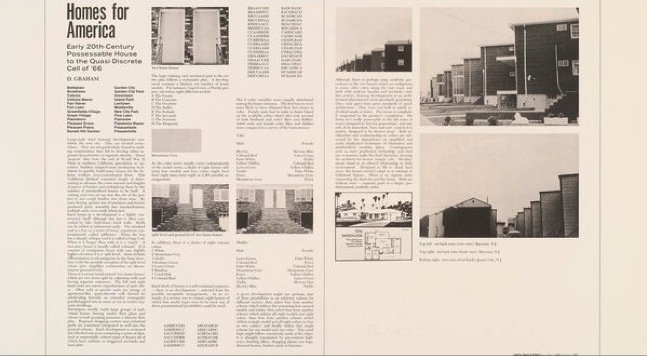
Excerpt from Dan Graham’s“Homes for America 1966,” published in Arts Magazine, December 1966-January 1967.
In his piece, Homes for America, Dan Graham published a spread about suburbia. The piece at first looks like an advertisement, then a critical essay, then art. Its formal position on the page reminds us of a suburban grid and in this piece he responds to the idea of a collective American Dream engaging the suburbs as a text. The house is also a surface made for intervention and filling and renovation. More recently, an unknown author filled a house not with furniture, but a super-hero Kung-Fu novel. The author’s efforts were found in a countryside cottage as one might discover a cast-aside book on a beach; here, the writer directly subverts our expectations of the house.

House of an unknown Chinese author in an abandoned cottage in Chongqing, China. Image courtesy of Croatian Times, 2010.
Gordon Matta Clark trespassed houses through aesthetic dissection. His resulting Frankensteins are breathtaking. He carves massive holes into floors and roofs and then photographs the result from different angles. In doing so he presents a Cubist conception of space: multiple perspectives of the same object can be viewed at once. He effectively unlocks the spatial attributes of a given (albeit abandoned) residence, using light and shadow to produce a new, flat representation of the original whole. In doing so he destroys the building’s original function. Through these interventions, he imposes himself on the house—the house becomes a text that Clark effectively “cuts up,” then reconfigures. In “Bingo,” a single, sculptural wall is practically useless. Somehow both part and whole. Signifier and sign. It is a map, a drawing, a cross-section, a monument; and the presence of its stairs is palpable.
As a kind of inverse, Rachel Whiteread casts the negative space of houses. This is her stair—a ghost stair. Everything about the original, point-of-origin stair has been lost, what remains is its shadow or rubbing. The shadows she captures are hard, steel-and-plaster objects. Not so much marginalia but a trace of the lattice that makes marginalia possible.
Or in this instance, we see the cast of one house’s interiority. It is alone on a block standing like a memorial for whatever houses existed there before. It refuses entrance. Whiteread does the same with books. The memory of these peculiar books and the shelves they sat on remains, while the texts they bore are impossible to access.
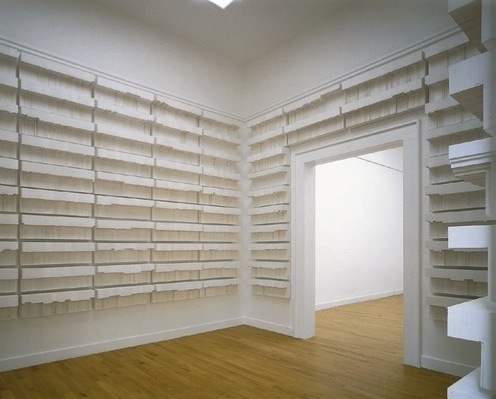
Rachel Whiteread. “Untitled (Paperbacks),” 1997. Plaster and steel. 15 x 16 x 20′ as installed at MoMA
Bruno Schultz is an unsung and easily forgotten hero of Polish literature. His book The Street of Crocodiles describes a family living in a small village. The knobby cobblestones that make up the streets of this village inspired the book’s title. Its stories are domestic, weaving in and out of one another as they describe the mythology of a family. The father is a man who lives between life and death. The mother runs a clothing shop. Schultz didn’t begin writing until later in life, and after winning a prestigious award was shot in the street by a Nazi Gestapo. His works were largely forgotten in the United States. A few years ago, Jonathan Saffron Foer took Schultz’s book and cut it up.
Something about Foer’s action is particularly reminiscent of Clark. A dogged insistence on Foer’s part to engage an old architecture—not a house in this case but a book, and a historical one at that. A book that happened to fall by the wayside of history. Foer effectively forces a conversation with ghosts. There is violence in his repeated action of neat, clean cuts. He has said “At times I felt that I was making a gravestone rubbing of The Street of Crocodiles, and at times that I was transcribing a dream that The Street of Crocodiles might have had.”[1] Foer’s measured incision is what makes the final result both disquieting, and effective. Like Clark, he leaves holes where there were words creating visual gaps that make it possible for a reader to apprehend more than one page at once. The resulting object becomes something entirely new and distinct: another Frankenstein.
One of my favorite figures in Virgil’s Aeneid is the Cumean Sibyl. She helps him descend into Hades and commune with his father, though she is first described as one who writes fortunes on oak leaves. She writes compulsively, leaving a collection of prophesies in a pile outside of her door. People have to come and collect these scraps in order to preserve a record of what has taken place and what is yet to come, lest the wind scatter it all into oblivion. I can’t tell if the Sybil’s writing is the text, or if it’s more like a temporal marginalia—on a leaf, of course—a leaf that, like a bone, is a portal to some greater, natural whole. She destroys one surface to create another. Like all these instances, though, an effort is made to record and apprehend something elusive: a fortune, a perspective, a shadow. It feels both inherent to the text and just out of reach. It arrives by way of alchemy, via the reader. These side notes and cut-ups illustrate an attempt to engage a vastness impossible to fully apprehend, and appear as emissaries, or trail heads, reminding us of the well beneath text, a space for deep drinking where, unlike Lethe, recollection is possible.
This post is based on a talk that I gave at the National Museum Publishing Conference this past June (2012) in Chicago. Alongside Steve Woodall (Center for Book and Paper Arts) and Jill Shimabukuro (University of Chicago Press), I was part of a panel called “The Book as a Beautiful Object,” organized by Danielle Chapmen.
[1] https://www.huffingtonpost.com/jonathan-safran-foer/tree-of-codes_b_782873.html#s181503&title=Tree_of_Codes

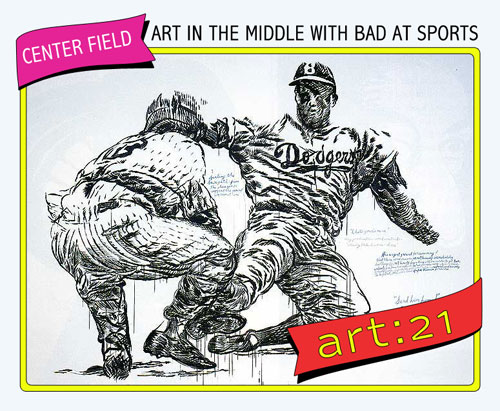
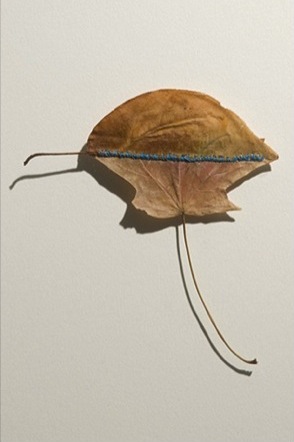
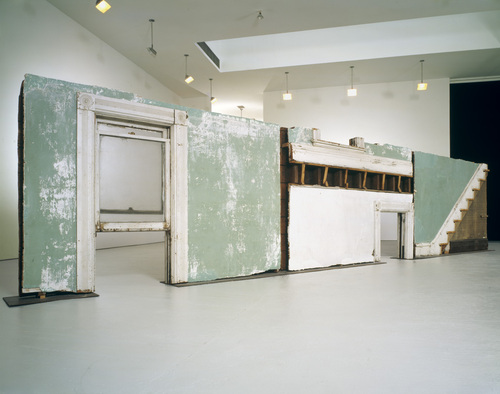
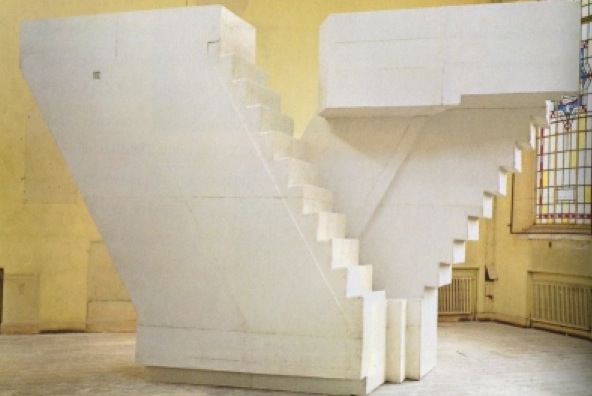
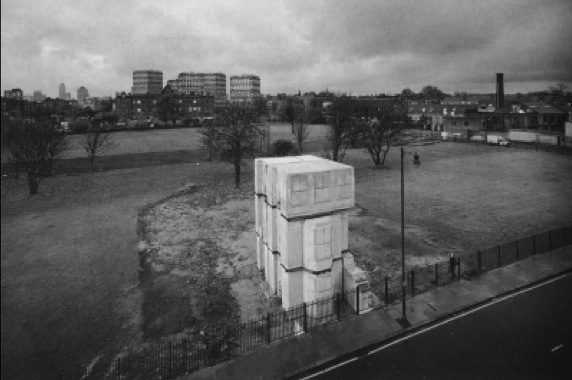

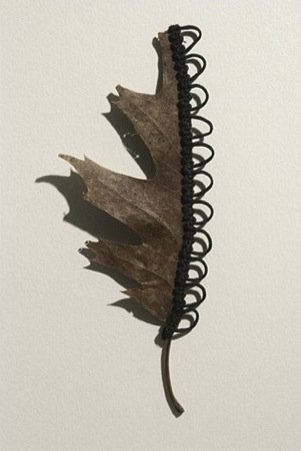



Pingback: Past Lives of Books | The Lantern Daily